No, not the 1923 spinoff of the Yellowstone TV series – Riverton, NJ, one hundred years ago!
Unlike the Yellowstone Ranch depicted in 1923, Riverton’s 2,341 citizens (1920 US Census) benefited from many conveniences and municipal services typically available in a modern suburb.
-
- a fine public school erected in 1910
- Riverton Free Library, established in
- public utilities (gas, electric, water, streetlamps)
- a thriving business section along Main Street
- police and fire protection
- trash collection
- access to passenger train, bus, ferry, and trolley services
- telephone and express facilities.


Two businesses, Joseph T. Evans (situated where Riverton War Memorial is now) and J.S. Collins & Son at 600 Main, each supplied coal, lumber, feed, and building materials for the growing village.
Established in Philadelphia in 1838, the seed, plant, and bulb firm of Henry A. Dreer relocated its trial grounds and greenhouses to Riverton in 1873. Over the years, Dreer’s expanded its nurseries based in and near Riverton to more than 300 acres.
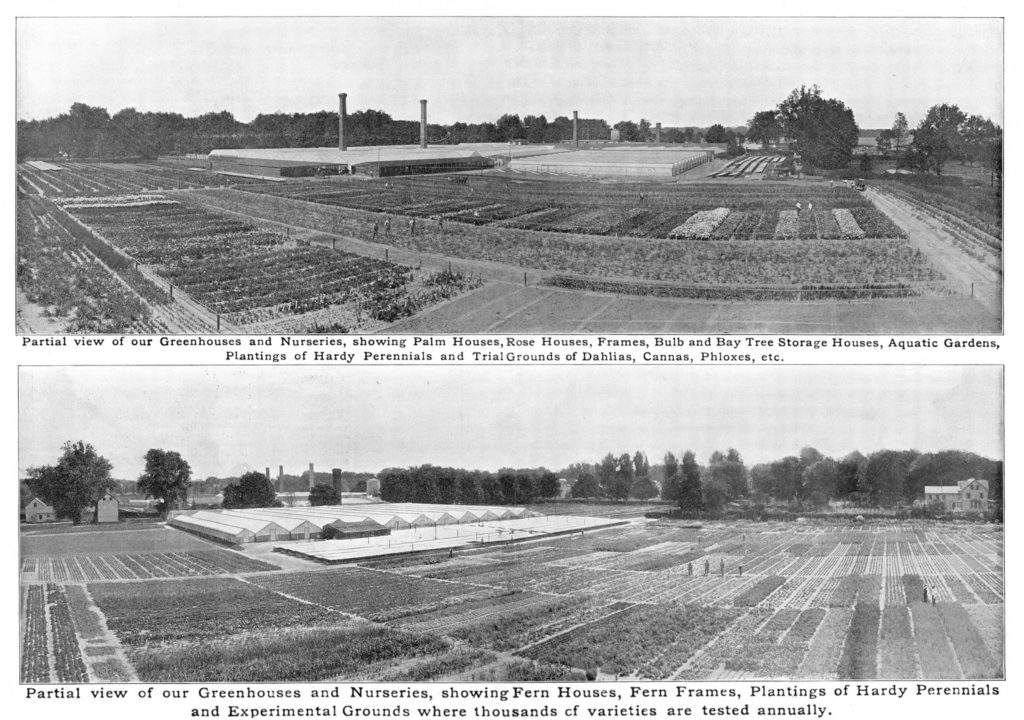
By 1923, it was the largest business of its kind in the East and a major employer in this area. To quote Betty Hahle, “People came from the world over to study horticulture at their Riverton nurseries and to see the gardens in bloom from Spring until late Fall. (See much more about Dreer here.)
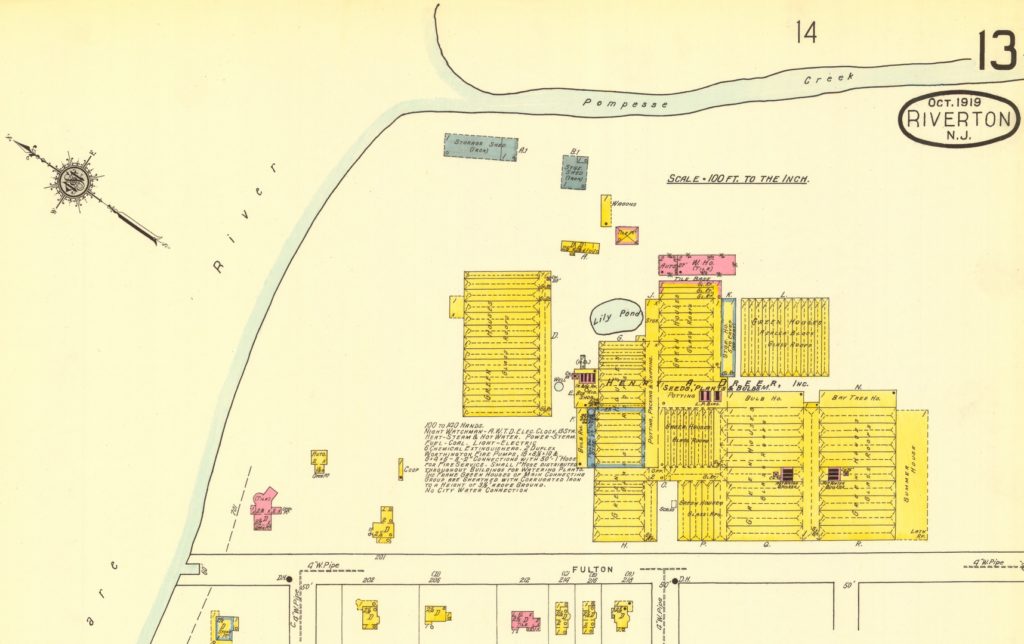

Something else that came were Japanese beetles, probably as stowaways that arrived in the grub stage from Japan in a shipment of iris plants.
Discovered in 1916 by two men who were inspecting the nursery of Henry A. Dreer, the insects have been an agricultural scourge since.
The Borough’s purchase in late 1923 of 13.4 acres of land from Henry A. Dreer’s property helped create Riverton Memorial Park as a fitting memorial to members of the Armed Forces who served during World War I, thus affording a recreation space for generations.
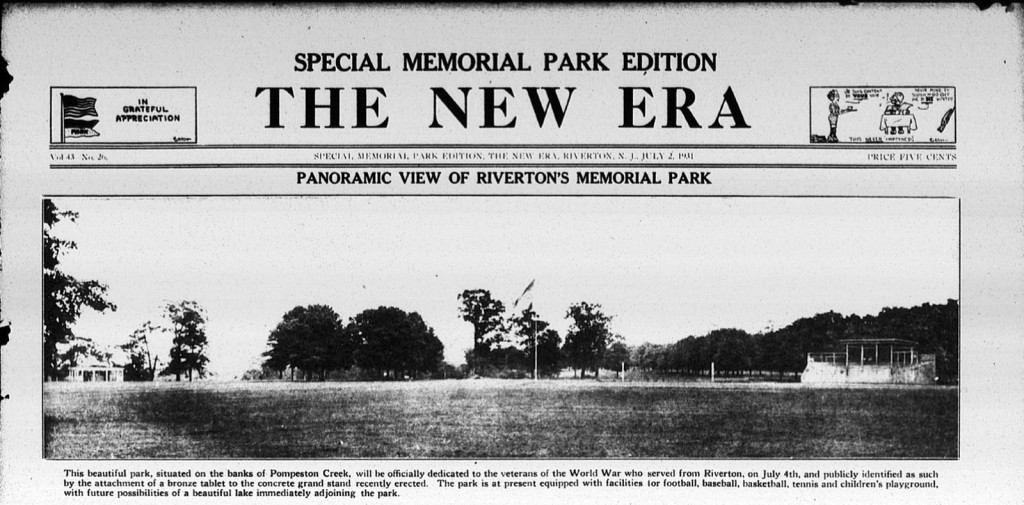

Additional activities organized by the Yacht Club, Porch Club, Golf Club, and its houses of worship provided myriad ways to socialize and better the community.
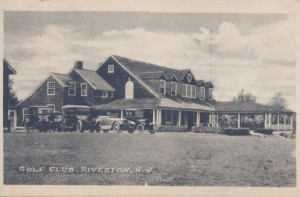
It all combined to make Riverton an enjoyable place to live in 1923.

A century ago, you could buy a new car at Taylor’s Garage located at Broad and Fulton.
(Bonus points if you can tell what is there now.)
Over at Broad and Lippincott, the Durant Sport Model available at Woolston’s may have been more to your liking.
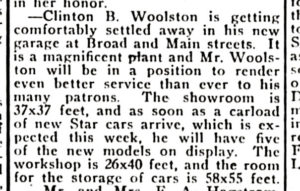

The next year, Woolston moved operations to a larger location at the newly erected Williams & Wright Building (1923) at Broad and Main.
This later photo of another dealership at that spot might clear up the location.
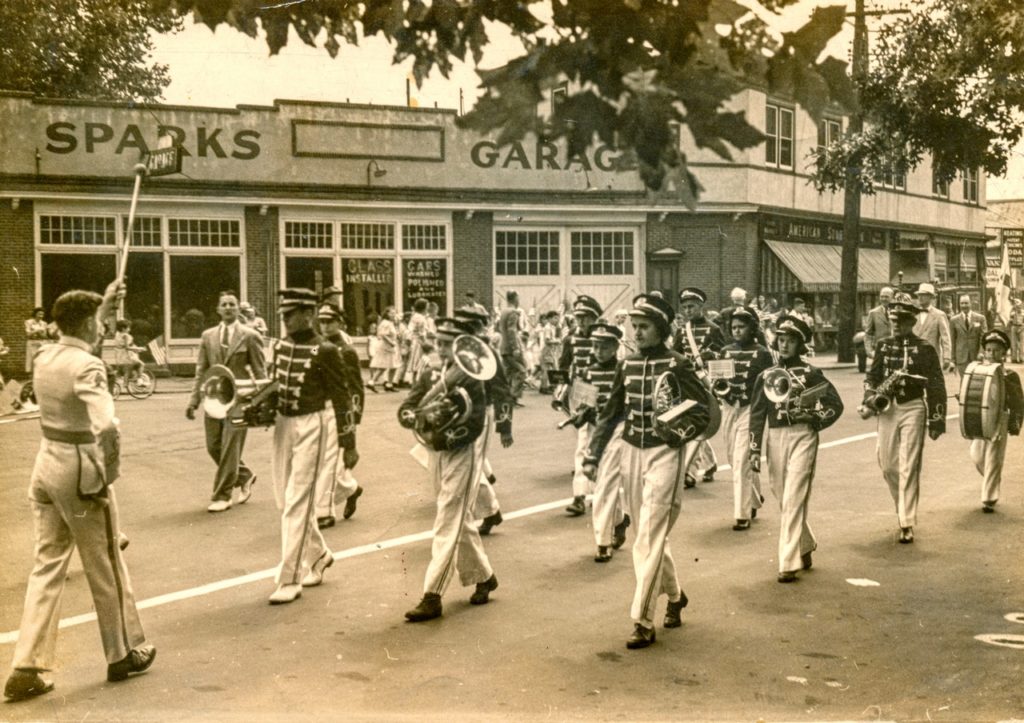
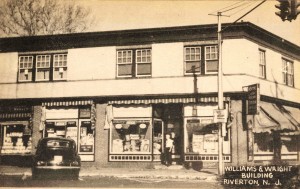
The American Store pictured to the right of the garage was one of the first tenants of the Williams-Wright building in February 1923.
Note Lawrence “Chappie” Keating’s Drug Store at the corner. (Can an auto buff date that automobile?)
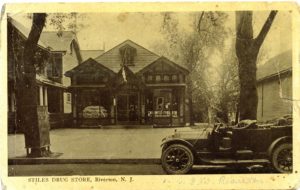
Other options for shopping within walking distance included:
-
- Compton the Grocer and Mattis Meat Market situated in the Collins Building on Main
- Chew’s Bakery at 512 Main
- Riverton Market House in the Price Building at 308 Broad
- Stiles Drug Store at 606 Main (now The New Leaf)
- Cinnaminson National Bank at 611 Main
- Mrs. Alfred Smith’s Store at 414 Main.
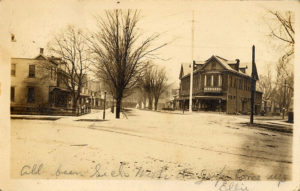
Built in 1890, Joseph Roberts’ Brick Store at The Point in Riverton replaced an earlier burned structure.
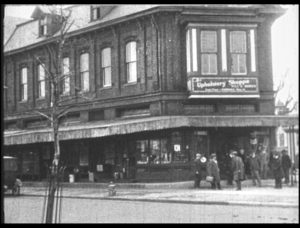
It provided fresh and canned fruits and vegetables, a wide variety of meats, and dry goods such as notions, chinaware, hardware, tinware, paint, glass, and other general merchandise.
It was said that you could purchase anything from a safety pin to a sewing machine at his store. (See more details about Joseph Roberts’ Store here.)
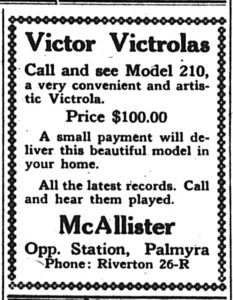
You might have to trek to Palmyra, though, to purchase a radio or record player.
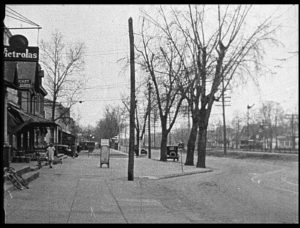
Camden’s Victor Talking Machine Company (later becoming RCA) introduced the Victrola in 1906, and radio emerged as a home entertainment medium in the early 1920s. The household that could afford one of these novel inventions in 1923 was indeed fortunate.
McAllister’s in Palmyra offered a Model 210 Victrola for $100. According to officialdata.org, $100 in 1923 is equivalent in purchasing power to about $1,735.65 today.
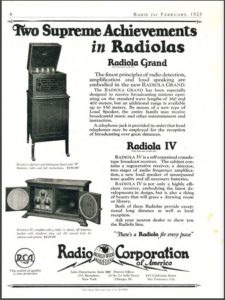
RCA introduced its Radiola Grand in 1923.
There’s probably a reason that Robert C. Bitting did not display the $350.00 price tag for it in The New Era; adjusted for inflation, it was equivalent in purchasing power to about $6,074.79 today. (If you have to ask, you can’t afford it.)
Some things have not changed in a century. Riverton still is an enjoyable place to live.
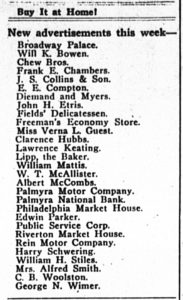
Only one of these advertisers mentioned in the May 24, 1923 issue of The New Era newspaper is still in business 100 years later.
(We’re not counting The Public Service Corporation, which merged its electric and gas utilities into a single company, PSE&G (Public Service Electric and Gas Company), in 1928.)
If you guessed this business, then you win absolutely nothing except bragging rights about your extensive knowledge of the history of Riverton, NJ.
We cannot close without asking our readers to check those attics, drawers, basements, and family albums for the next discovery of Riverton’s history. -JMc





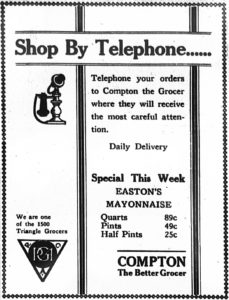

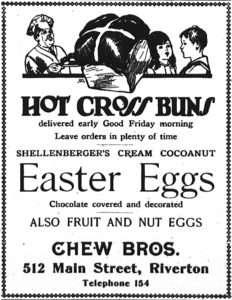
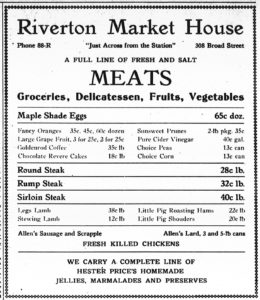
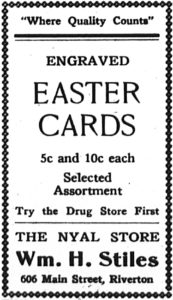
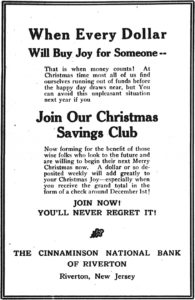

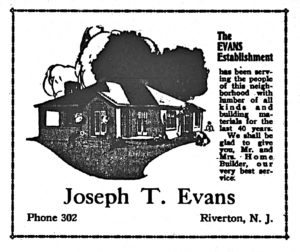
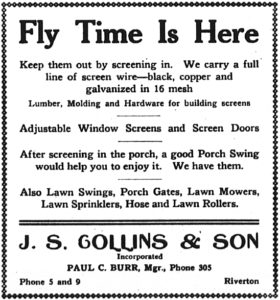

Great content!
Another excellent issue! Thank you
Joe d